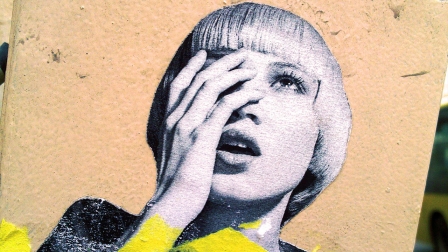Why It’s So Hard To Change A Bad First Impression
If you watched TV in the 1980s, you probably remember the Head & Shoulders shampoo commercial warning, “You never get a second chance to make a first impression.”
Now new research suggests that this isn’t entirely accurate, though the news isn’t good for anyone who is trying to improve perceptions.
Naughty To Nice, Or Nice To Naughty
For a paper called “The Tipping Point of Moral Change: When Do Good and Bad Acts Make Good and Bad Actors?” published in Social Cognition, Nadav Klein and Ed O’Brien, psychological scientists at the University of Chicago, ran several experiments designed to discover how quickly people are willing to change impressions.
In one online study of 201 participants, an office worker known as “Barbara” started off neutrally, but occasionally committed (or failed to commit) a series of positive or negative actions. Sometimes she held doors for people and gave compliments. Other times she would cut in line and spread gossip. Subjects answered how long such behavior had to go on for their perception of Barbara to tip in various directions.
The result? Barbara had to do nice things for more consecutive weeks to become regarded as a good person than the number of weeks she had to do bad things to become bad. Another online experiment involving 200 female participants also found that people were quick to judge when Barbara was doing wrong and much slower to believe she’d changed for the better. The researchers found similar outcomes for scenarios involving characters who tipped or shared resources in either a stingy or generous fashion.
Easier To Become A Sinner Than A Saint
“People apparently need to commit just a few bad actions to appear substantially changed for the worse, but need to commit many good actions to appear substantially changed for the better,” the authors write. There is an “asymmetric moral tipping point.” In other words, “it is apparently easier to become a sinner than a saint, despite exhibiting equivalent evidence for change,” they conclude.
If you’ve made a good first impression on a group of people, don’t get too comfortable. Flub something, and they’ll quickly change their impression for the worse. But if you made a bad first impression? Then the Head & Shoulders commercial is on to something because, as Heather Huhman, founder and president of Come Recommended, puts it, “People are always quick to judge, and we like our opinions—we don’t like to change our minds.”
Indeed, when someone forms a negative opinion of someone, and then witnesses nice acts, it causes such cognitive dissonance that people will do all sorts of things to avoid changing their original thesis. Jack Schafer, a former FBI agent and author of The Like Switch, notes that people will often rationalize nice behavior in a way that indicates the original opinion was correct, such as, “He’s being nice now, so I will help him do his work, which he’s not very good at in the first place.” Or they will simply avoid the person, in order to avoid seeing any more evidence of nice behavior.
So, “it is difficult to change a bad first impression, but not impossible,” Schafer says. He recommends that you “act in a consistent way to all people that contradicts the bad first impressions, whatever they may have been.”
Huhman agrees. “Don’t try to force new relationships—no one gets close in one day,” she says. “Let relationships evolve naturally, and don’t do things just to make people like you, like buying gifts and saying yes to everything,” Huhman advises. “Be genuine, be yourself, and be patient as the relationship grows.”
Fast Company , Read Full Story
(21)













